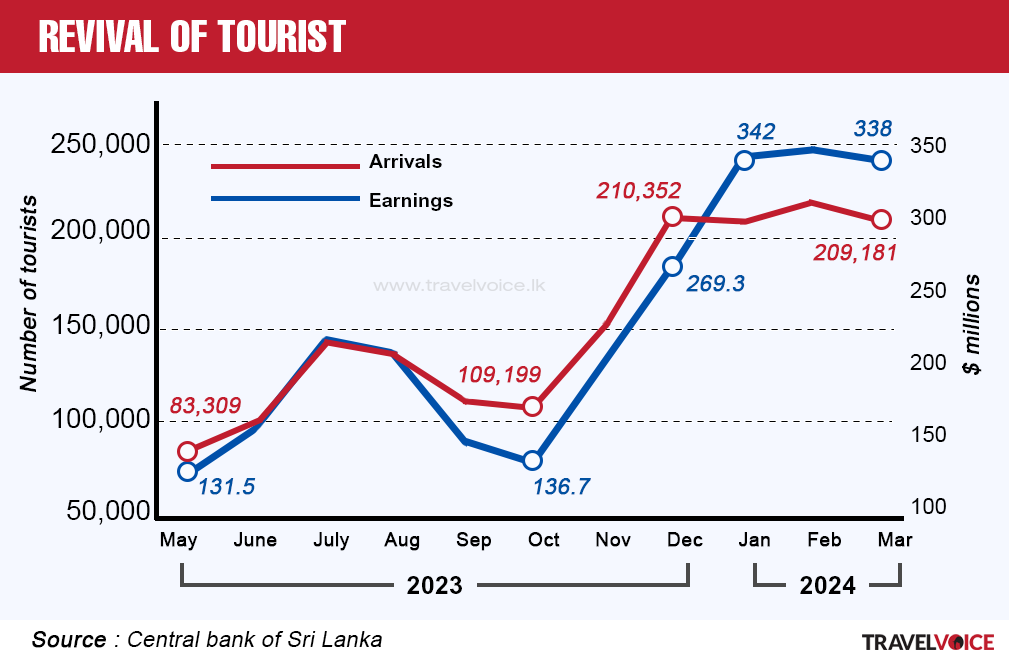Sri Lanka’s tourism industry has reflected a robust upturn, earning over $ 1 billion during the first quarter. It signifies the remarkable recovery and potential growth in the industry, showcasing its resilience and attractiveness as a tourist destination.

The level of performance is particularly noteworthy when compared to the previous year, when reaching such a milestone took the country seven months.
Tourism earnings in the first three months of 2024 were over $ 1.03 billion reflecting a 103% increase from the corresponding period of last year, whilst March earnings stood at $ 338.4 million, the latest Central Bank data released showed.
However, on a month-on-month basis, March earnings experienced a 2.1% marginal decreased compared to February. This makes the $ 345.7 million generated in February 2024, the highest monthly earnings registered since 2020 thus far.
Despite facing a series of challenges stemming from Easter Sunday attacks in 2019, the industry has not only weathered the multiple storms, but emerged stronger.
The resilience in the tourism industry has instilled renewed confidence in the sector’s potential for growth.
With the ongoing promotional efforts and global spotlight on Sri Lanka’s safety and satisfaction of visitors, the industry is determined to regain its status as most preferred destination for travellers worldwide.
The rebound in the sector is further underscored by the surge in arrivals, which totalled an impressive 635,784 in the first three months of 2024, a stark contrast to 2023.
For 2024, Sri Lanka Tourism aims to draw 2.3 million visitors and achieve an income of over $ 4 billion. Tourism remains an important source of net foreign exchange earnings for the country, as the foreign currency outflows on account of inputs are minimal.
Sri Lanka Tourism is focusing on welcoming high-end tourists with plans to lift the average spending per visitor to $ 4,000. Sri Lanka Tourism Development Authority (SLTDA) aims for 2.5 million visitors to spend over $ 500 per day. The focus is on attracting high-spending visitors, which currently account for around 33-35% of tourists.











